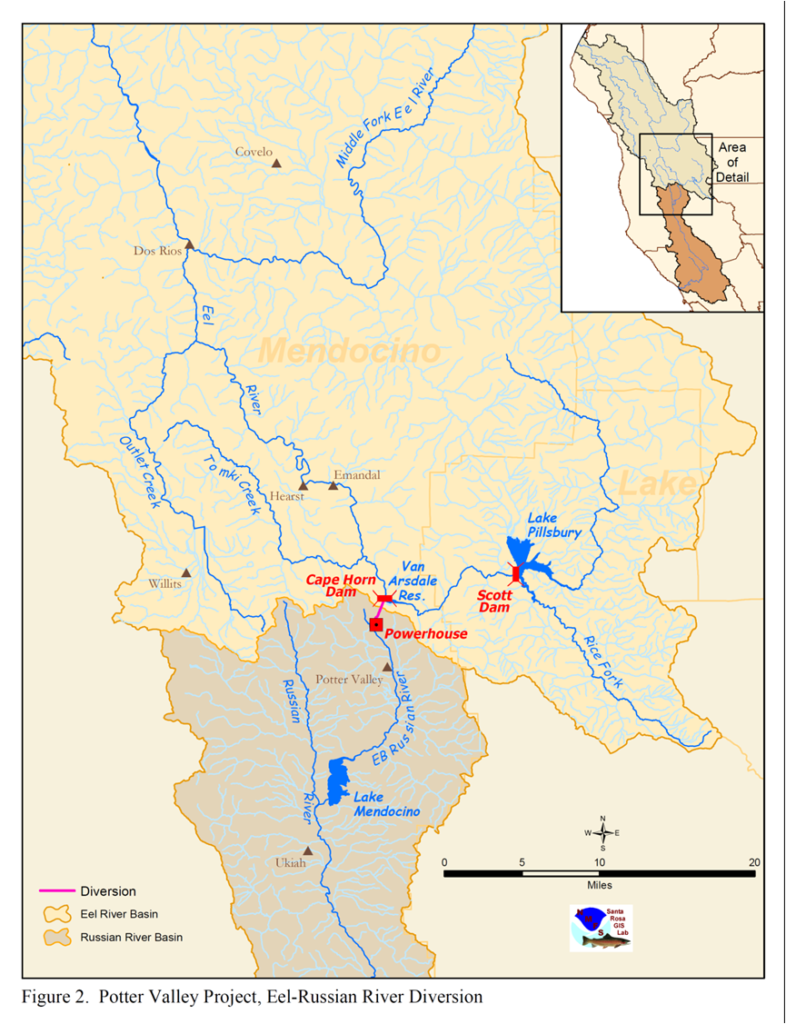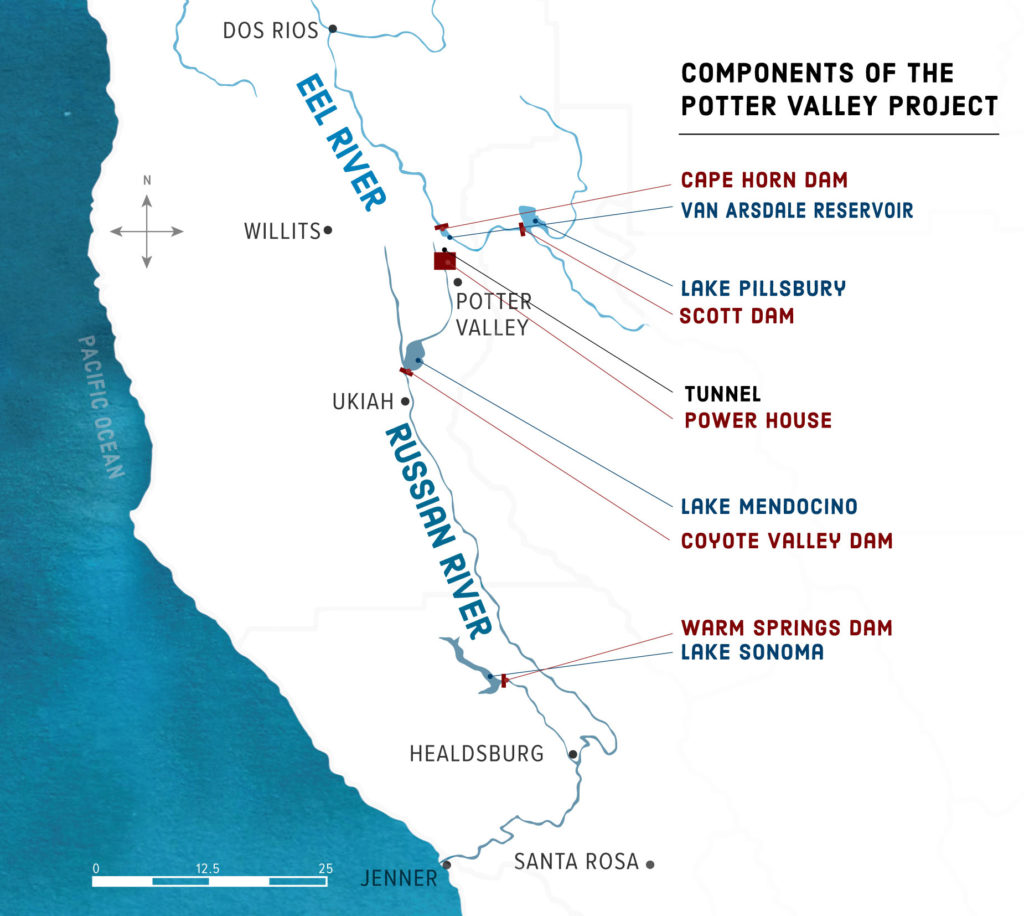WATERSHED
Maps

Map of the Eel River Watershed
The Eel River Watershed covers over 3,500 square miles. The Counties of Humboldt, Trinity, Tehama, Glenn, Colusa, Lake and Mendocino share this diverse river system. The main tributaries of the Eel River include the Middle Fork, North Fork, Van Duzen, South Fork and the Upper Mainstem. The Potter Valley Project is located in the very highest reach of the Upper Mainstem of the Eel River.
Map of Potter Valley Project
The Potter Valley Project is located on the Upper Mainstem Eel River. The Project consists of Cape Horn Dam, which was built in 1908, forming Van Arsdale Reservoir. This is the area where the actual diversion, fish ladder and fish screen facilities are located. Twelve miles upriver from Cape Horn Dam is Scott Dam. Scott Dam was built in 1922 to store winter rainfall and snow melt that is released in the summer. Scott Dam is over 170 river miles from the estuary and the mouth of the Eel River at Fortuna. Lake Pillsbury was formed by Scott Dam and it is in the Mendocino National Forest. It attracts thousands of visitors every year for camping, fishing and boating. The map also shows the relationship between the diversion tunnel at Van Arsdale Reservoir, the Powerhouse in Potter Valley, the East Branch of the Russian River and Lake Mendocino.


Components of Potter Valley Project
Water flows from the upper main step of the Eel River into Lake Pillsbury, which is formed by Scott Dam. Then water flows from Lake Pillsbury downstream to Van Arsdale Reservoir, which is formed by Cape Horn Dam. Here, some of the Eel River water is diverted into the Russian River watershed, while the balance of water continues flowing through the Eel another 170 miles and then into the Pacific Ocean at Ferndale.
This water diversion is possible because of a diversion tunnel that connects the two watershed basins. Water from the tunnel flows into PG&E’s hydroelectric powerhouse which previously generated power for more than 2,000 homes. The diverted water then flows through Potter Valley, forming the East Branch of the Russian River, which runs into Lake Mendocino — a lake created by Coyote Valley Dam.
Below Coyote Valley Dam, water flows into the Russian River and travels south through Sonoma County and is co-mingled with natural flows from the tributaries of the Russian River watershed. The water finally reaches the Pacific Ocean at Jenner.

